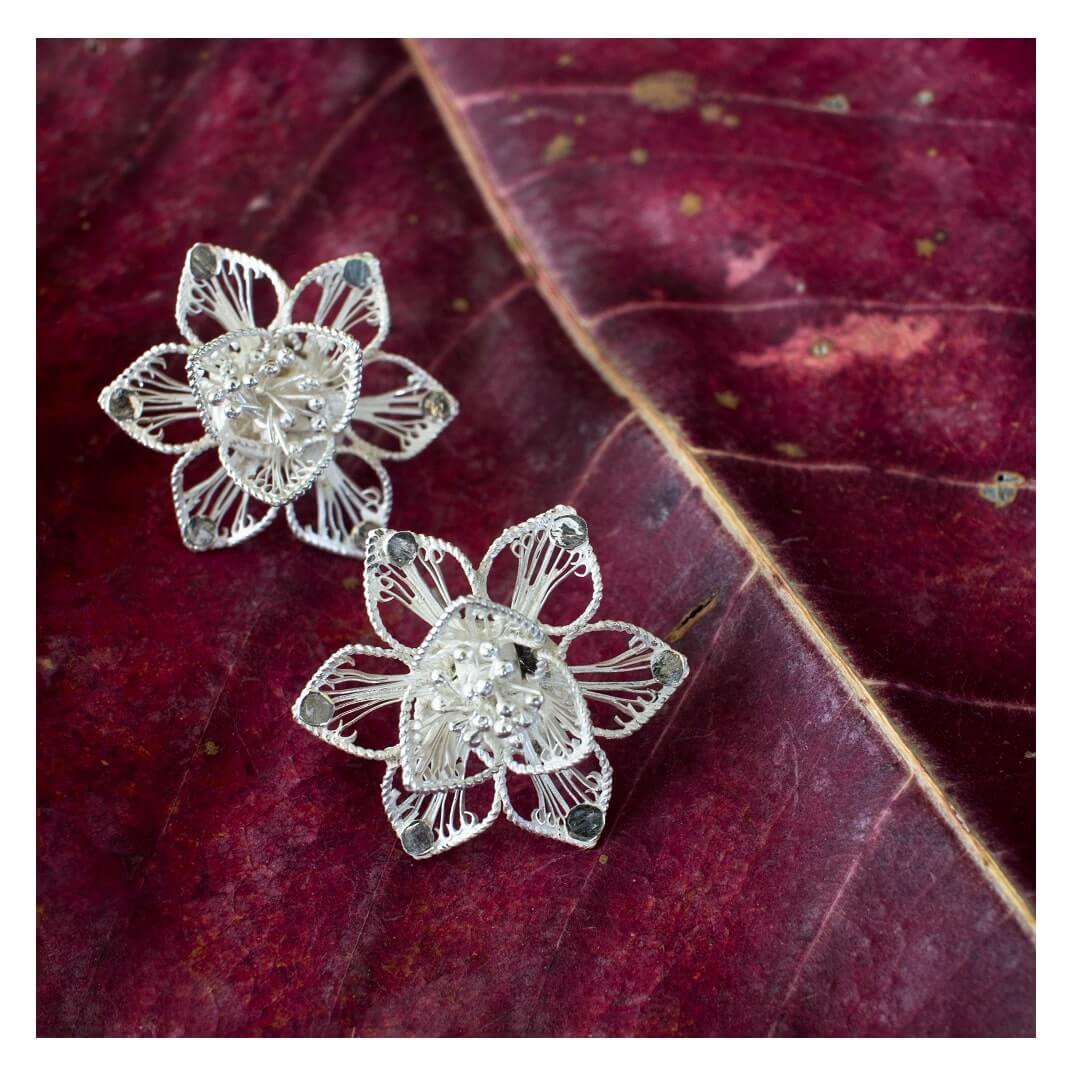
Cuttack filigree, known for its intricate designs and exquisite craftsmanship, stands as a testament to the rich cultural heritage of Odisha, India. Its delicate patterns and meticulous detailing have earned it a prestigious Geographical Indication (GI) tag, recognizing its unique origin and traditional techniques. In this blog, we embark on a journey to explore the captivating world of Cuttack filigree, delving into its history, significance, and the artistry behind its creation.
Cuttack, the cultural capital of Odisha, has long been renowned for its skilled artisans who specialize in the art of filigree. Filigree involves the intricate twisting and soldering of fine silver or gold wires to create decorative motifs and patterns. What sets Cuttack filigree apart is its distinct designs inspired by nature, mythology, and traditional Odishan motifs.
The origins of Cuttack filigree date back centuries, with references found in ancient texts and artifacts. Historically, it flourished under royal patronage, adorning the palaces and temples of Odisha. Over time, it evolved into a revered art form passed down through generations of artisans, each adding their unique touch while preserving age-old techniques.
In 2016, Cuttack filigree was granted the coveted Geographical Indication tag, a testament to its cultural and historical significance. This recognition not only safeguards the traditional craftsmanship but also elevates the status of artisans and promotes economic development by fostering local pride and tourism.
Crafting Cuttack filigree requires exceptional skill and precision. Artisans begin by melting down pure silver, which is then drawn into thin wires. These wires are meticulously twisted, shaped, and soldered by hand to form intricate patterns such as flowers, birds, and geometric motifs. The process demands patience and dexterity, often taking weeks to complete a single piece.
Cuttack filigree encompasses a wide range of ornamental pieces, including earrings, necklaces, bangles, and decorative items like trays and figurines. Each piece reflects the artisan's creativity and expertise, showcasing a harmonious blend of tradition and innovation. Whether it's a statement necklace adorned with peacock motifs or delicate jhumkas (earrings) reminiscent of blooming lotus flowers, every creation tells a story of Odisha's rich cultural heritage.
While Cuttack filigree remains deeply rooted in tradition, artisans are also embracing modern influences to cater to contemporary tastes. Collaborations with designers and access to global markets have opened new avenues for innovation while ensuring the preservation of ancestral techniques. This dynamic balance between tradition and modernity ensures that Cuttack filigree continues to thrive in the 21st century.
Cuttack filigree is more than just jewelry; it is a living legacy of Odisha's artistic prowess and cultural identity. From its humble beginnings to its recognition on the global stage, it embodies the resilience and creativity of generations of artisans. As we celebrate its Geographical Indication tag, let us cherish and support the timeless artistry of Cuttack filigree, ensuring that its legacy shines bright for generations to come.
